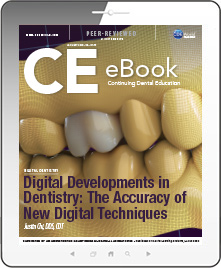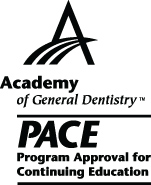CDEWorld > eBooks > Digital Developments in Dentistry: The Accuracy of New Digital Techniques


ADA CERP is a service of the American Dental Association to assist dental professionals in identifying quality providers of continuing dental education. ADA CERP does not approve or endorse individual courses or instructors, nor does it imply acceptance of credit house by boards of dentistry. Concerns or complaints about a CE provider may be directed to the provider or to ADA CERP at www.ada.org/cerp/

Approved PACE Program Provider. FAGD/MAGD credit. Approval does not imply acceptance by a state or provincial board of dentistry, or AGD endorsement. 1/1/2023 to 12/31/2028. ID # 209722.
eBook
Released: Friday, January 24, 2020
Expires: Tuesday, January 31, 2023
Digital Developments in Dentistry: The Accuracy of New Digital Techniques
By Justin Chi, DDS, CDT
Commercial Supporter: Glidewell Laboratories
Digital technology, including CAD/CAM design software and the use of intraoral scanning, is becoming ubiquitous within the dental industry. Many clinicians, currently in the process of adopting and integrating these new tools into their practices, seek information about the overall accuracy and success rate of the outcomes that digital methods produce, particularly in comparison with traditional analog approaches. Multiple clinical studies provide the data these clinicians are seeking; reported results from various sources demonstrate that the results gleaned from digital dentistry can meet or exceed those achieved through traditional methods in accuracy, time and money saved, and patient comfort.
LEARNING OBJECTIVES:
- List the various aspects of traditional impressions that lead to inaccurate results.
- Describe at least three documented advantages to the use of digital impression methods.
- Discuss how 3D imaging, artificial intelligence, and other types of computer technology contribute to the accuracy of proposals designed with CAD/CAM software.
- Describe, in general terms, the overall trend in recent study results regarding the accuracy and success of CAD/CAM-based restorations.
About the Author
Justin Chi, DDS, CDT
Glidewell Laboratories
Irvine, California


